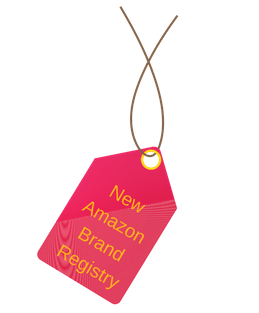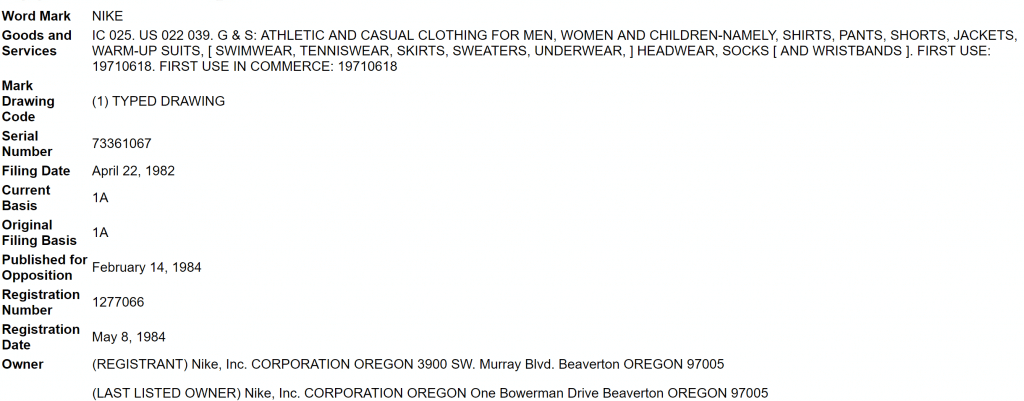Editor’s note: This is a guest post by Yael Cabilly Owner of Cabilly & Co.
You’ve probably already heard about Amazon’s new Brand RegistryAmazon Brand Registry is a tool that ena… More program, “Brand Registry 2.0”, which is supposed to be the answer to all brand violations on Amazon. While we still don’t know how efficient the program will be, we do know that it is no longer available to any seller.
Until recently, as a seller on Amazon, you could apply for Brand Registry in a few simple steps. To begin with, you’d prove you own a domain name that displays your brand. You’d then show that your brand is visible on your packaging. Finally, you’d show that the brand appears on the actual product.
According to Amazon’s new rules, you must now comply with an extra requirement: owning a registered trademark. Creating your brand and investing in its marketing doesn’t cut it anymore. You now need to protect your brand by registering it with the US Patent and Trademark Office (USPTO). In other words, Amazon will put the effort into protecting your brand if you put some effort into it first.
With or without this new Brand Registry, many Amazon sellers realized long ago that a trademark is the only way to protect their brands. In fact, it couldn’t have been any clearer to anyone who’s dealt with the Amazon Seller PerformanceA measure of how well Amazon sellers are… More Team recently.
While Brand Registry mostly protects the listing’s content (photos and description), the trademark protects the actual brand, in and outside of Amazon. This can be very confusing, so I’ve put together a few questions that Amazon sellers, and Private LabelThis is what you call products manufactu… More sellers in particular, ask us very frequently. I hope the answers will shed some light into the process.
Why do I need a trademark?
On Amazon, a registered trademark offers sellers several advantages:
- it makes them eligible for the new Brand Registry, obviously;
- it enables them to file complaints against hijackers and remove them immediately;
- it enables them to file complaints against other sellers, who sell the same product on a separate listing, under a very similar brand.
- You will be the first to obtain the brand, and nobody will be able to take it from you. It sometimes happens, unfortunately, that a third party registers the brand before you do, and it can then prevent you from using your own brand, and sometimes even take over your listing
Where do I file for a trademark?
US Trademarks can be filed through the US Trademark and Patent Office at www.uspto.gov.
Does it protect my brand outside of the US?
No, a trademark must be filed in each territory separately. If you file for a TM in the US, you will not be protected in Europe, for instance. Note that there is a European registry (EUIPO) that protects trademarks in all 28 member countries of the European Community.
How long does it take to obtain a trademark?
Unfortunately, the process takes time. If everything goes well, it usually takes 7-8 months.
What happens in the meantime?
You will not be eligible for the Brand Registry program until the trademark is fully registered. You may, however, warn hijackers of your trademark application, and even complain to Amazon (this often works). Also, please see below “When can I use the TM symbol”.
Must I be a US citizen/company in order to register a trademark?
Absolutely not. Any individual or company (and other legal entities) from any country can apply for a trademark.
What does my trademark cover?
This is perhaps the most important thing you need to know. A trademark does not protect your brand in every situation. It protects your brand in a specific category, for specific products. For example, the brand NIKE is registered as a trademark in class 25 (the clothing category), in relation to various products (shirts, socks, pants, etc.).
Here is an example of one of their old trademarks:
Can I register one trademark in several categories?
Yes. However, each category costs $275, and you will need to prove that you are actually using the trademark in each category (use = sales).
What if someone uses my brand in a different category?
Generally speaking, your trademark will protect your brand from being used in the sale of identical or similar products in your specific field. Let’s say you registered the trademark “baboon” in relation to puzzles. If other sellers want to sell phone covers using the same brand name, “baboon”, you won’t be able to prevent them. If, however, they sell board games, you will probably be able to remove the listings.
Do I need different brands for each product? Should I register each of them as trademarks?
Unfortunately, you only get one brand per trademark application, so if your have different names for your products, they all need to be registered. To save costs, I always advise my clients to try and find a brand name that they can apply to many different products.
Should I use the ™ or the ® symbol?
Here’s a tip most sellers don’t know about: you can use the ™ symbol right now, even before you file for a Trademark. In fact, you can use the ™ symbol as soon as you invented the brand name and made sure it’s available. The ™ symbol does not necessarily mean you have applied for a trademark. It just means that you have a non-registered mark and you consider your brand to be your trademark. The ® symbol, however, can only be used after you’ve completed the registration process and obtained a certificate of registration.
What are the requirements, in order to obtain a trademark?
To complete the registration process, you will need to:
- file a ‘Statement of Use’ as proof that you’re using the mark in the U.S.A. (that is, selling products labeled with that trademark);
- provide “proof of use” (i.e., a photo of your product/packaging bearing the mark);
- check that your trademark is unique in your field (search the Trademark Electronic Search System and make sure your brand is available in your category);
- define and classify your list of products properly, in line with USPTO rules – the most complex task in the Trademark registration process.
Can I do it myself?
Yes. The USPTO allows brand owner to apply for the trademark themselves, and many of them learn the process. There are a few legal requirements you should be familiar with, though. So, if you do it yourself, I strongly advise that you take the time to read about the subject and learn the process.
Good Luck!
Yael Cabilly *
* The author is a New York Attorney with over 12 years of experience in Intellectual Property A collection of ideas, concepts, … More. Yael is the owner of the firm Cabilly & Co. (www.e-cabilly.com), which assists hundreds of Amazon sellers with trademarks, copyrights, and design patent registration. Cabilly & Co. also advise private sellers on Intellectual Property violations on Amazon and fight counterfeiting activities on e-commerce platforms.








6 Responses
Dear Yael,
In the case two registered figurative brands exist having identical textual elements (because these elements are non distinctive/highly descriptive), for the same goods. How will Amazon determine which company get what textual part as brandname? Any idea?
In this case I could use the following made up brands as an example:
F F Fireflame (figurative mark). At this moment in Amazon branded as Fireflame but registered linguistic as F F Fireflame
Fireflame (combined mark). At this moment not in Amazon but registered textual as Fireflame
Best regards,
Erik
Hi Erik,
It’s very difficult to know how they will act, because it’s a new program.
My guess is that they’ll choose the first who applies for the brand.
Please feel free to send me an email with the specific example.
Good luck!
Yael
Amazon do not accept figurative mark. They said they only accept word mark. Unrealistic
That’s right Eric, thanks for your comment. At this time Amazon only accepts wordmarks (a TM that only covers the words) and not logos.
Hi,
very interesting comments!
what about logos that contain text, like McDonalds or UPS?
Regards,
Dave
Dave and Eric,
Important update!
Amazon has changed its policy last week: logos (that include words) are now accepted for the Brand Registry Program.
These are very good news for many sellers and brand owners, who trademarked only their logo.
Good luck,
Yael